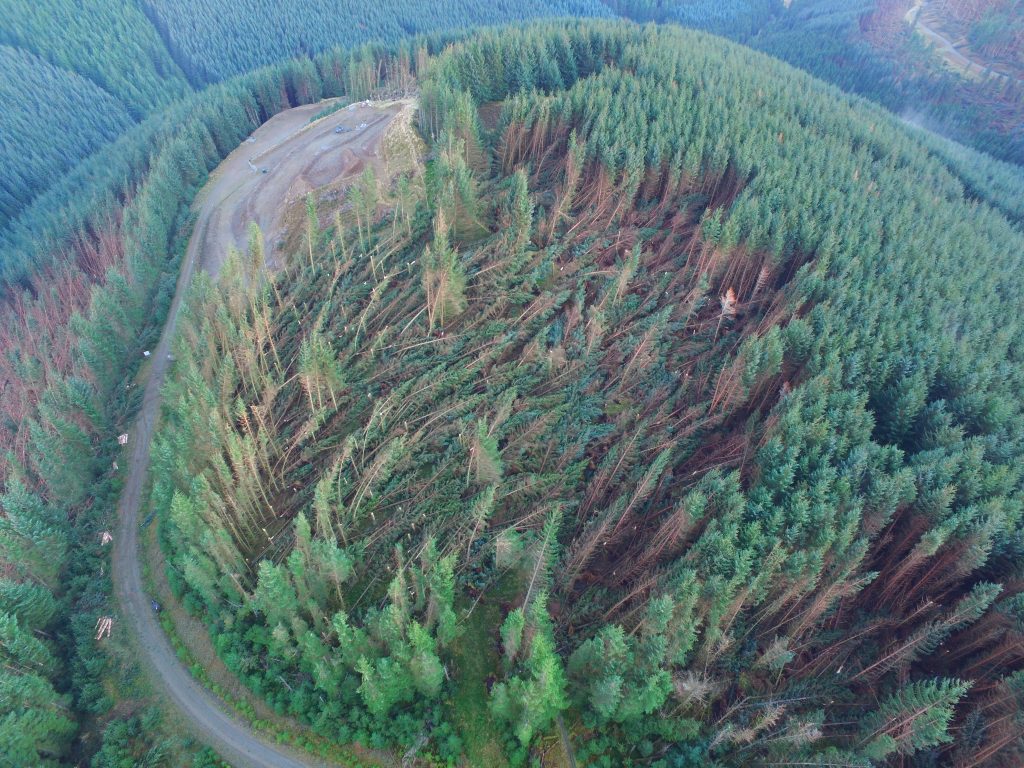The way public and private forestry organisations have worked together to manage the aftermath of the winter storms has been praised by Environment Minister Màiri McAllan.
Very quickly after Storm Arwen hit late in November last year, Scottish Forestry and Confor brought together the industry to start the huge task of managing the recovery operation.
At the time, Forest Research initially estimated that 4,000 ha of woodland had been damaged by Arwen. Their revised estimate now stands at 8,000 ha, around 16 million trees.
Forest Research say the revised estimates are derived from improvements in computer modelling, updated mapping and through citizen science, where woodland owners have provided on the ground data.
Environment Minister, Màiri McAllan said:
“Although it now seems a long time ago, the effects of Storm Arwen and the following winter storms are still being felt.
“Many landowners are still clearing up and this will continue for months to come. The forestry sector had its mettle thoroughly tested but it has shown its resilience and is managing the aftermath very well.
“The way so many parts of the industry have pulled together is really quite admirable.”
Over the last four months, Scottish Forestry has been supporting the sector by allocating extra staff resources to the places in most need. They have fast tracked the necessary paperwork needed to handle windblown trees.
Staff at Scottish Forestry have already approved 5,000 ha worth of Felling Permissions and are working on 2,000 ha more. The average turnaround time for the paperwork was fast tracked to 16 days, when it would normally take up to six weeks.
Doug Howieson, Scottish Forestry’s head of operational delivery added:
“The winter storms have put us under a lot of pressure but we’ve been up to the challenge. Staff have worked tirelessly with the industry on managing the aftermath and have put in a heroic shift.
“Felling Permission applications, which are needed for windblown trees, are starting to slow down now which is a good indication that we are past the initial emergency phase of this work.”
Scottish Forestry has been providing regular sets of guidance to the forestry sector throughout the winter storms, including a new Top Ten Tips checklist for woodland owners that may have little experience of windblow.
Forestry and Land Scotland’s (FLS) teams are working with contractors to deal with the significant levels of storm damage in the national forests it manages.
Although some locations are likely to remain affected for months, FLS is beginning to open up recreational access. The agency is advising visitors to check its website for the latest information on each visitor location, and not to enter into closed or storm damaged woodlands.
Advice on managing storm damaged trees is available from within the industry too. Andy Leitch, Deputy Chief Executive of forestry and wood trade body Confor, added:
“Confor would like to thank everyone who has engaged with the Citizen Science app which has helped Forest Research to update its assessment of the level of windblow associated with Storm Arwen.
“The industry continues to focus on ensuring the wood brought down by the windblow is recovered safely and timeously. If there are still landowners looking for advice on how to deal with their windblow they can find a list of companies that can help on the Confor website.”
It might take a generation for the forests and woodlands to be restored. Foresters are keen to turn this into a positive opportunity to plant new species, making forests more resilient than before.
A mapping tool showing woodland damage is available here.





